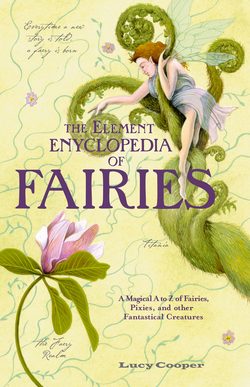Читать книгу THE ELEMENT ENCYCLOPEDIA OF FAIRIES: An A-Z of Fairies, Pixies, and other Fantastical Creatures - Lucy Cooper - Страница 7
A Pygmy People
ОглавлениеSome folklorists and anthropologists, mostly nineteenth-century ones, have suggested that fairy beliefs sprang from memories of conquered races of dwarvish people who lived in caves or mounds and used flint arrows. Stories about fairies, according to this theory, were the result of a clash of cultures. In Britain, this race of small people was conquered by the ancestors of the modern British, who had iron weapons. The conquered people retreated to the hills, or were driven into remote areas such as mountains and swamps, as the larger, more powerful, better-armed race advanced. Some hold this to be why iron is still used as protection against pernicious fairies today.
John Webster, writing in the same era as Shakespeare, expressed a view that was popular at the time:
… fairies are pigmy creatures which really exist in the world, and are and may be still in islands and mountains that are inhabited, and that they are not real daemons. But that either they were truly of the human race, endowed with the use of reason and speech, or, at least, that they were some kind of little apes or satyrs, having their secret and recesses and holes in the mountains.
Jakob Grimm, best known as one half of the Grimm brothers, who famously collected fairy tales throughout Germany and Europe, theorized that once there had been a widespread dwarf population across Europe, which had given rise to many traditions associated with supernatural elves and fairies.
David MacRitchie, a Scottish folklorist and antiquarian, popularized the “pygmy theory” in his controversial book The Testimony of Tradition (1890). In Fians, Fairies and Picts (1893), he used the science of archeology, which was then just developing, to provide evidence for his theory of an ancient dwarflike people. He argued that the Fians, the people preceding the Scots, and the Picts, of Irish and Scottish history, had been skilled in medicine, magic, music, and masonry, and had lived in hidden underground earth houses, which were later known as fairy hills or fairy forts, such as the chambered mounds of Maes-Howe in the Orkneys and New Grange at Boyne in Ireland. The fires that could be glimpsed at night through the tops of their underground dwellings were the “fairy lights” that appeared in folklore across Britain as lights that led humans astray. Stories of women, men, and children taken away by the “fairies” were in fact the result of stealthy raids carried out by the defeated race as acts of retaliation against their oppressors.
This belief was found in other Celtic regions too. In Cornwall around the end of the nineteenth century, the local secretary for the Society of Antiquarians believed the original inhabitants of the area to have been “a strange and separate people” who still lived in the Cornish wilds. Once thought to be witches and wizards, they were, he believed, really the descendants of the Pictish tribes, and thus the Picts had become pixies, or “piskies,” as the Cornish called them.
